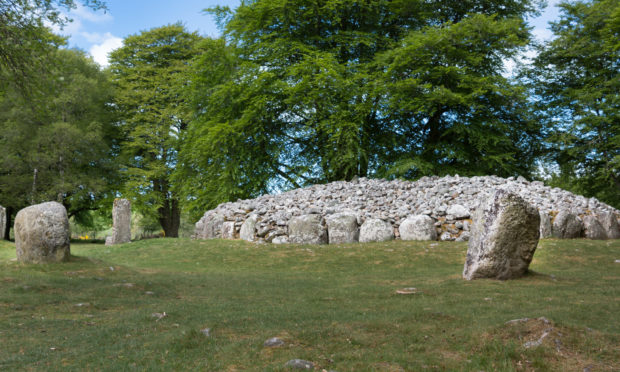Members of the public have been asked to dig out old photographs of an historic Highland site linked to hit drama series Outlander, to help preserve it for the future.
Clava Cairns, a Bronze Age burial ground near Inverness, is believed to be the inspiration for Outlander’s fictional Craigh na Dun, the mysterious stone circle where World War Two combat nurse Claire, played by Caitriona Balfe, is swept back to the 18th century and the eve of the Battle of Culloden.
The TV series, which also stars Scottish actor Sam Heughan, has been credited with attracting many thousands of visitors to the 4,000-year-old site, but the dramatic increase in footfall caused by the “Outlander Effect” has also led to erosion and other damage.
A conservation project, Monument Monitor, run by Historic Environment Scotland (HES) and University College London (UCL), uses visitor photographs to monitor changes at remote heritage sites.
And with Scotland currently in lockdown, organisers of the scheme want people to search through photograph albums and memory sticks for older images of Clava Cairns.
In particular, they want snaps dating to before 2014, when the TV adaptation of Diana Gabaldon’s bestselling Outlander novels was first screened. These images will then be used to help gauge the impact of visitors on the site and shape its future conservation.
Project coordinator Rosie Brigham, of the Institute of Sustainable Heritage at UCL, said: “Travelling to heritage sites like Clava Cairns is currently not an option, so what we want are any old photos people have from previous visits – the older the better.
“At Clava Cairns, we would really like photographs from prior to 2014 to help us monitor erosion pre and post Outlander.
“There has been such a huge increase in visitor numbers, including coach loads of tourists from cruise ships who visit the battlefield and then Clava. Using photographs is a way of trying to work out how many people have been going there and how the site has been affected.”
It is estimated that more than 90,000 people per year now visit the site. The impact of so many visitors can be seen in erosion at the entrance to the chambered cairn and around the stone circle.
There are fears that as erosion continues, important information could be lost to archaeology. There have also been rare instances of vandalism, including initials etched on the ancient stones.
Miss Brigham said: “The rise in visitor numbers at some sites associated with Outlander has been astronomical.
“Very delicate heritage sites that have been left that way for thousands of years might not be able to cope with thousands of footfalls per year.”
Photos can be sent to submissions@monumentmonitor.co.uk
